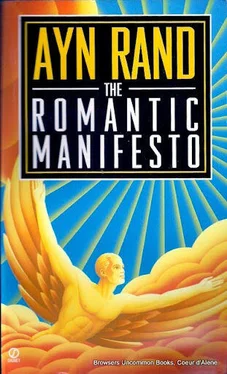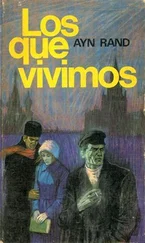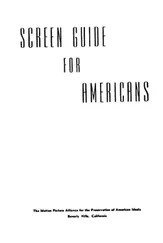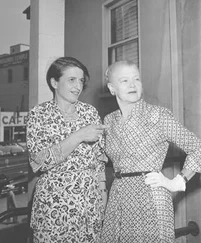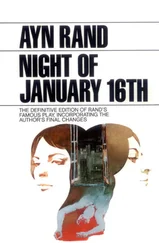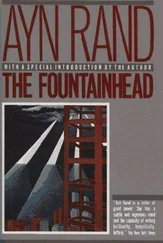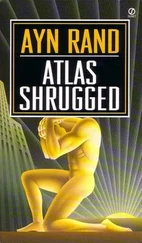The same principle applies to an irrational man, though in different terms, according to his different views and responses. For an irrational man, the concretized projection of his malevolent sense of life serves, not as fuel and inspiration to move forward, but as permission to stand still: it declares that values are unattainable, that the struggle is futile, that fear, guilt, pain and failure are mankind’s predestined end—and that he couldn’t help it. Or, on a lower level of irrationality, the concretized projection of a malignant sense of life provides a man with an image of triumphant malice, of hatred for existence, of vengeance against life’s best exponents, of the defeat and destruction of all human values; his kind of art gives him a moment’s illusion that he is right—that evil is metaphysically potent.
Art is man’s metaphysical mirror; what a rational man seeks to see in that mirror is a salute; what an irrational man seeks to see is a justification—even if only a justification of his depravity, as a last convulsion of his betrayed self-esteem.
Between these two extremes, there lies the immense continuum of men of mixed premises—whose sense of life holds unresolved, precariously balanced or openly contradictory elements of reason and unreason—and works of art that reflect these mixtures. Since art is the product of philosophy (and mankind’s philosophy is tragically mixed), most of the world’s art, including some of its greatest examples, falls into this category.
The truth or falsehood of a given artist’s philosophy, as such, is not an esthetic matter; it may affect a given viewer’s enjoyment of his work, but it does not negate its esthetic merit. Some sort of philosophical meaning, however, some implicit view of life, is a necessary element of a work of art. The absence of any metaphysical values whatever, i.e., a gray, uncommitted, passively indeterminate sense of life, results in a soul without fuel, motor or voice, and renders a man impotent in the field of art. Bad art is, predominantly, the product of imitation, of secondhand copying, not of creative expression.
Two distinct, but interrelated, elements of a work of art are the crucial means of projecting its sense of life: the subject and the style — what an artist chooses to present and how he presents it.
The subject of an art work expresses a view of man’s existence, while the style expresses a view of man’s consciousness. The subject reveals an artist’s metaphysics, the style reveals his psycho-epistemology.
The choice of subject declares what aspects of existence the artist regards as important—as worthy of being re-created and contemplated. He may choose to present heroic figures, as exponents of man’s nature—or he may choose statistical composites of the average, the undistinguished, the mediocre—or he may choose crawling specimens of depravity. He may present the triumph of heroes, in fact or in spirit (Victor Hugo), or their struggle (Michelangelo), or their defeat (Shakespeare). He may present the folks next door: next door to palaces (Tolstoy), or to drugstores (Sinclair Lewis), or to kitchens (Vermeer), or to sewers (Zola). He may present monsters as objects of moral denunciation (Dostoevsky), or as objects of terror (Goya)—or he may demand sympathy for his monsters, and thus crawl outside the limits of the realm of values, including esthetic ones.
Whatever the case may be, it is the subject (qualified by the theme) that projects an art work’s view of man’s place in the universe.
The theme of an art work is the link uniting its subject and its style. “Style” is a particular, distinctive or characteristic mode of execution. An artist’s style is the product of his own psycho-epistemology—and, by implication, a projection of his view of man’s consciousness, of its efficacy or impotence, of its proper method and level of functioning.
Predominantly (though not exclusively), a man whose normal mental state is a state of full focus, will create and respond to a style of radiant clarity and ruthless precision—a style that projects sharp outlines, cleanliness, purpose, an intransigent commitment to full awareness and clear-cut identity—a level of awareness appropriate to a universe where A is A, where everything is open to man’s consciousness and demands its constant functioning.
A man who is moved by the fog of his feelings and spends most of his time out of focus will create and respond to a style of blurred, “mysterious” murk, where outlines dissolve and entities flow into one another, where words connote anything and denote nothing, where colors float without objects, and objects float without weight—a level of awareness appropriate to a universe where A can be any non-A one chooses, where nothing can be known with certainty and nothing much is demanded of one’s consciousness.
Style is the most complex element of art, the most revealing and, often, the most baffling psychologically. The terrible inner conflicts from which artists suffer as much as (or, perhaps, more than) other men are magnified in their work. As an example: Salvador Dali, whose style projects the luminous clarity of a rational psycho-epistemology, while most (though not all) of his subjects project an irrational and revoltingly evil metaphysics. A similar, but less offensive, conflict may be seen in the paintings of Vermeer, who combines a brilliant clarity of style with the bleak metaphysics of Naturalism. At the other extreme of the stylistic continuum, observe the deliberate blurring and visual distortions of the so-called “painterly” school, from Rembrandt on down—down to the rebellion against consciousness, expressed by a phenomenon such as Cubism which seeks specifically to disintegrate man’s consciousness by painting objects as man does not perceive them (from several perspectives at once).
A writer’s style may project a blend of reason and passionate emotion (Victor Hugo)—or a chaos of floating abstractions, of emotions cut off from reality (Thomas Wolfe)—or the dry, bare, concrete-bound, humor-tinged raucousness of an intelligent reporter (Sinclair Lewis)—or the disciplined, perceptive, lucid, yet muted understatement of a represser (John O’Hara)—or the carefully superficial, over-detailed precision of an amoralist (Flaubert)—or the mannered artificiality of a second-hander (several moderns not worthy of mention).
Style conveys what may be called a “psychoepistemological sense of life,” i.e., an expression of that level of mental functioning on which the artist feels most at home. This is the reason why style is crucially important in art—both to the artist and to the reader or viewer—and why its importance is experienced as a profoundly personal matter. To the artist, it is an expression, to the reader or viewer a confirmation, of his own consciousness—which means: of his efficacy—which means: of his self-esteem (or pseudo-self-esteem).
Now a word of warning about the criteria of esthetic judgment. A sense of life is the source of art, but it is not the sole qualification of an artist or of an esthetician, and it is not a criterion of esthetic judgment. Emotions are not tools of cognition. Esthetics is a branch of philosophy—and just as a philosopher does not approach any other branch of his science with his feelings or emotions as his criterion of judgment, so he cannot do it in the field of esthetics. A sense of life is not sufficient professional equipment. An esthetician—as well as any man who attempts to evaluate art works—must be guided by more than an emotion.
The fact that one agrees or disagrees with an artist’s philosophy is irrelevant to an esthetic appraisal of his work qua art. One does not have to agree with an artist (nor even to enjoy him) in order to evaluate his work. In essence, an objective evaluation requires that one identify the artist’s theme, the abstract meaning of his work (exclusively by identifying the evidence contained in the work and allowing no other, outside considerations), then evaluate the means by which he conveys it—i.e., taking his theme as criterion, evaluate the purely esthetic elements of the work, the technical mastery (or lack of it) with which he projects (or fails to project) his view of life.
Читать дальше
